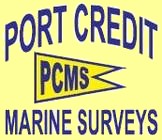 Port Credit Marine Survey & Yacht Delivery |
5. Power Management |
| You can add huge battery banks to ensure
all the conveniences of home but the
bigger
the bank, the bigger the charging source
must be. 2800amps in a house bank is
great
but it will take you a week to charge
them
with that 55amp alternator that in
reality
puts out 20amps if you are lucky. This
is
a complex issue and can be made more
so with
the addition of an inverter. Give serious
consideration to hiring an ABYC Certified Marine Electrician to review your system well in advance of
casting off. This will not only save
money
in the long run but there are significant
safety issues to be considered too. |
|
| Power management is a daily and sometimes
hourly project when on the hook and
one key
element is knowing how much you have
in your
batteries. We have an E-meter that tells us current
amperage draw, time remaining at that
draw,
amp hours used, voltage and a few other
critical
bits of information. If your batteries
are
more than a few years old, have them
load
tested before you depart. Just because
they
show 13.2V when hooked up to a shore
powered
charger does not mean they will last
with
the constant use they will be subjected
to.
We have found that 6V golf cart batteries in series/parallel take a tremendous amount of abuse and last a long time. Having your regulator set up to charge your batteries while tied to the dock at home is a very different matter than when cruising. A programmable regulator will allow you to adjust for high or lower charge rates depending on your cruising style. On the way south, power management is not such a big issue as running almost every day keeps your batteries up but when stuck on the hook for a few days due to weather or a few weeks once in the Bahamas, it becomes more difficult. Many sailboats have elaborate solar panel rigs that cost a fortune and when you consider |
 Laura at Manjack Key,in the Abacos Laura at Manjack Key,in the Abacos |
| their miserable output they are probably
the most expensive amps you will ever
buy.
Wind generators are much more efficient
but
many send a hum through the boat but
winter
winds in the Bahamas are pretty much constant. Our 2000watt gasoline
generator on the flying bridge in a
dedicated
box complete with exhaust outlet is
fitted
with a 30amp outlet into which we plug
our
shore power cord. Our 6 golf cart batteries
give 3 - 4 days power and then we run
the
genny for about 4hrs. to completely
recharge
them.
Many cruisers are now carrying these portable genny’s and when you consider cost per amp they are by far the most efficient means of topping up your batteries. Unfortunately I have seen too many sailboats with these units running in the cockpit…..can you spell carbon monoxide ? Put it way up at the bow and don’t forget to close that forward hatch. I read of one incident where a guy was working in his cockpit with a genny running on the dock next to his boat, he was found dead ! CO is buoyancy neutral and will go wherever the breeze takes it. |
|
Chapter 6. Ground Tackle and How to Use it. Back to Index Need a marine surveyor in Ontario... See this list of Every Marine Surveyor in Ontario 
|
|